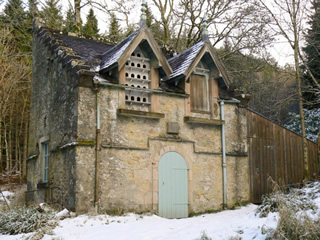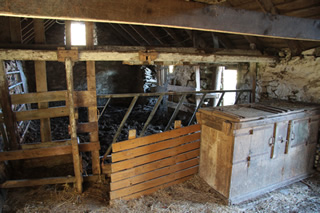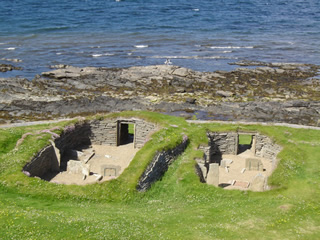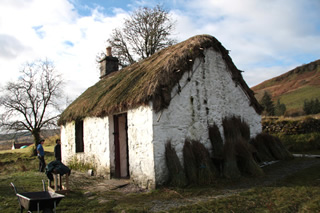
Organisations – Scotland
Architectural Heritage Society of Scotland
– concerned with the protection, preservation, study and appreciation of Scottish buildings.
Built Environment Forum Scotland
– a membership forum for understanding, promoting and influencing the dynamic relationship between the historic environment, new design and sustainable development.
Historic Environment Scotland
– the lead public body set up to investigate, care for and promote Scotland’s historic environment. It was formed by the merger of the Royal Commission on the Ancient and Historical Monuments of Scotland and Historic Scotland in 2015.
National Trust for Scotland
– an independent charity set up in 1931 for the preservation and conservation of natural and human heritage that is significant to Scotland and the world. See also, ‘Places to Visit’
Places of Worship in Scotland
– bringing to a wider public an understanding of all the places and buildings that have been used for worship in Scotland, regardless of faith, denomination or present condition.
Scottish Canals
– looks after the Scottish canals, conserving them as part of our heritage, and transforming them to play a vital role in Scotland today.
Scottish Local History Forum
– the umbrella organisation for all individuals and groups interested in local history in Scotland.
Society of Antiquaries of Scotland
– the senior antiquarian body of Scotland, promoting the cultural heritage of the country.
Society for the Protection of Ancient Buildings (SPAB Scotland)
– a semi-autonomous group of SPAB members in Scotland. SPAB is the largest, oldest and most technically expert national pressure group fighting to save old buildings from decay, demolition and damage.
Scotland's Brick Manufacturing Industry
– aims to identify all the Scottish brick makers back through the generations and to preserve physical examples of their bricks.
Scottish Industrial Heritage Society
– dedicated to the protection, preservation, study and appreciation of Scotland’s historic buildings.

UK-wide organisations, and regional groups
Association for Studies in the Conservation of Historic Buildings
– a forum for all professionals working in the field of architectural conservation.
The Mills Archive
– a permanent repository for the documentary and photographic records of traditional and contemporary mills and milling.
Building Limes Forum
– encourages expertise and understanding in the appropriate use of building limes.
Council for British Archaeology
– an independent charity bringing together members, supporters and partners to give archaeology a voice and safeguard it for future generations.
Institute of Historic Building Conservation
– includes a Scottish branch.
National Heritage Ironwork Group
– the first organisation worldwide focused solely on historic ironwork.
Regional Furniture Society
– studies the rich diversity of British regional furniture-making traditions, and the social and cultural context of furniture from the earliest times.
The Vernacular Architecture Group
– studies English and Welsh vernacular building traditions, with links to over a dozen local and regional groups.

Local and Regional Groups bordering Scotland
Cumbria Vernacular Buildings Group
Yorkshire Vernacular Buildings Study Group
North East Vernacular Architecture Group
There are a dozen other groups across England – along with other useful links, they may be found in the Vernacular Architecture Group’s website
Places to visit
Arnol, Lewis, No. 42
– a blackhouse, preserved almost as it was when its crofting occupants departed in 1966.
Auchindrain Township, Furnace, Inverary, Argyll
– the most complete surviving example of a Highland farm township, a type of settlement representative of much of Scottish rural history.
Argyll’s Lodging, Stirling
– Scotland’s most splendid and complete example of a 17th-century townhouse.
Bachelor’s Club, Tarbolton, Ayrshire
–17th-century house in which Robert Burns learned to dance, founded a debating club and became a Freemason.
Barony Mills, Birsay, Orkney
– a working watermill built in 1873, and grinding bere (an ancient form of barley).
Barrie’s birthplace, Kirriemuir, Angus
– two rooms have been recreated to appear as when Barrie was a boy.
Barry Mill
– a 19th-century working mill.
Burns Cottage
– a restoration of a two-roomed clay and thatch cottage; part of the Robert Burns Birthplace Museum
Carlyle’s birthplace, Ecclefechan
– the small, sparsely furnished house in which Thomas Carlyle was born in 1795.
Colbost Croft Museum, Dunvegan, Skye
– a traditional croft house depicting how islanders lived in the 19th century.
Corrigall Farm Museum, Harray, Orkney
– a traditional late 19th-century Orkney farmhouse and steading.
Cruck Cottage, Torthorwald, Dumfries
– an example of a type of construction that was common in the 18th and 19th centuries.
Dalgarven Mill and Museum of Ayrshire Country Life
– one of the oldest and tallest grain mills surviving in Scotland.
Highland Folk Museum, Newtonmore
– Britain’s first open air museum; it collects buildings representative of different aspects of Highland vernacular architecture.
Hugh Miller’s Birthplace Cottage and Museum, Cromarty
– a thatched fisherman’s cottage that was the birthplace and early home of the eminent geologist, writer and social commentator.
Laidhay Croft Museum
– a 200-year-old rush thatched Caithness longhouse.
Kirbuster Museum, Birsay, Orkney
– a 16th century homestead with a central hearth and stone neuk bed.
Moirlanich Longhouse, near Killin
– a cruck-framed farmhouse with byre attached, and many original features.
Preston Mill and Phantassie Doocot
– East Lothian’s last working water mill, and a 16th-century doocot.
Royal Burgh of Culross
– the most complete example of a Scottish Burgh of the 17th and 18th centuries.
The Crofthouse Museum, Dunrossness, Shetland
– a traditional croft house and steading with thatched roof, mill and outbuildings dating from the 1870s.
The Skye Museum of Island Life
– a small township of thatched buildings illustrating island life at the close of the nineteenth century.
Souter Johnnie’s Cottage, Kirkoswald, Ayrshire
– an 18th-century cobbler’s cottage with workshop and living quarters.
Tankerness House, Kirkwall, Orkney
– a laird’s townhouse that contains the Orkney Museum.
Wanlockhead Village and Museum of Lead Mining
– an 18th century lead mine, miners’ cottages, and the second oldest subscription library in Europe.
Weaver’s Cottage, Kilbarchan
– an 18th-century handloom weaver’s house.

Resources
Archaeology Data Service
– supports research, learning and teaching with freely available, high quality and dependable digital resources.
Bibliography of the Vernacular Architecture Group
– contains over 11,000 references and access is free.
Building Conservation
– provides information on products and services for the conservation of historic buildings.
Canmore
– the online catalogue for Scotland’s archaeology, buildings, industrial and maritime heritage.
Dictionary of Scottish Building
– Glen Pride’s invaluable glossary of Scottish building terms.
Researching Historic Buildings in the British Isles
– Jean Manco's valuable resource.
National Records of Scotland
– selects, preserves, and makes available the national archives of Scotland.
National Library of Scotland
– the map images online are particularly valuable.
Scotland’s Brick Industry
– records Scottish brick makers, and preserves and illustrates examples of their bricks.
Scotland’s Places
– national databases for accessing historical resources relating to places throughout Scotland.
Scran
– hosts images, movies and sounds from museums, galleries and archives.

Email: info@svbwg.org.uk | Scottish Charity SCO 10835